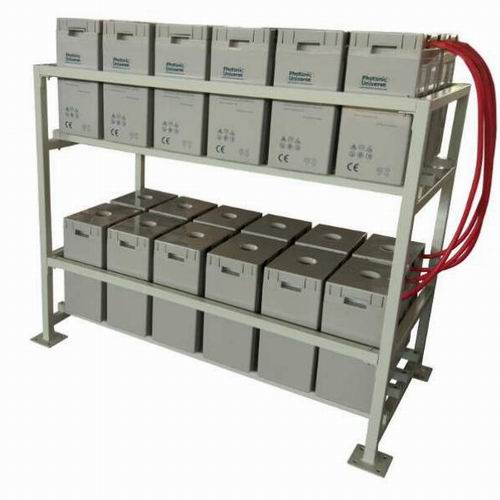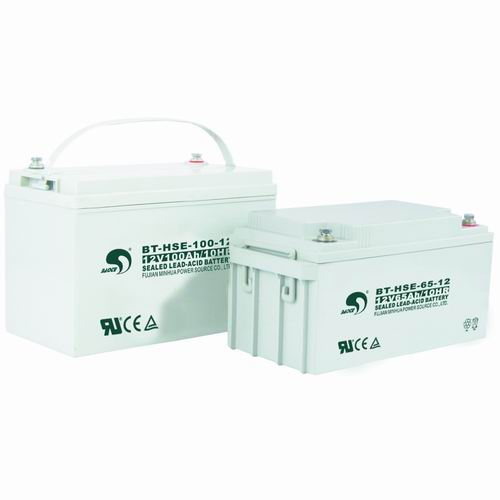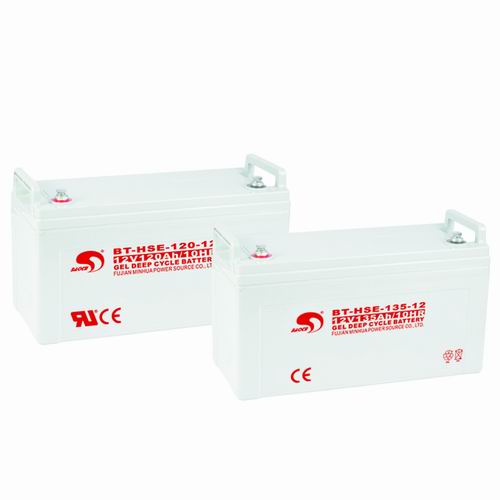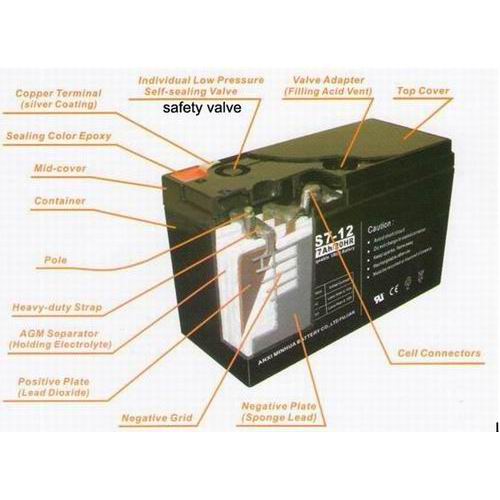Battery FAQ
Battery Charge & Discharge
■Charging
A. For Standby Use (Trickle Charge or
Float Charge)
1. Charge the battery at a constant voltage of 2.275 V/cell (25°C or 77°F).
When charging at an ambient temperature of less than 5°C (41°F) or more than
35°C (95°F), and average temperature above 25°C (77°F), it is necessary to
adjust the charge voltage in ratio to the temperature. The temperature
coefficient should be -3.3mV/°C cell.
2. Initial charging current should be 0.3CA (where C is the nominal capacity value and A is amperes) or less.
3. We recommend charging the battery at an ambient temperature between 5°C (41°F and 35°C (95°F) to prevent any adverse effects on its effective life.
B. For cycle service
1. Maintain a modified constant voltage or a constant voltage charge at a voltage of 2.45 V/cell (25°C or 77°F). When charging at an ambient temperature of less than 5°C (41°F) or more than 35°C (95°F), it is necessary to adjust the charge voltage in ratio of the temperature. The temperature coefficient should be -5mV/°C cell.
2. Initial charging current should be 0.3CA (where C is the nominal capacity value and A is amperes) or less.
3. To avoid overcharging, when charging is finished, we recommend charging to be stopped by using a timer or the constant voltage to be dropped to 2.275 V/cell (25°C or 77°F).
4. We also recommend charging the battery at an ambient temperature between 5°C to 35°C to prevent any adverse effects on its effective life.
C. Rapid Charge
In one of the following conditions, the rapid charge must be taken:
The open circuit voltage is under 2.08V/cell after installation; Need to charge
fully the battery in a short period time after discharge ending; When float
charge voltage is under 2.20V per cell, need to increase the battery float charge
voltage; When after cycled battery discharges; When battery has been stored
over 6 months. When taking rapid charge, the voltage should be 2.35-2.40V/cell,
limited current =< 0.25CA, recommended voltage is 2.35V/cell. If you choose the battery group of 1040Ah/48V, the rapid charge voltage is 56.4V, and the limited current is equal to or under 260A.
The time of rapid charge is:
Charging battery for 6-8 hours when environment temperature at 21-32°C;
Charging battery for 12-16 hours when environment temperature at 10-20°C.
Important: Don't use battery in airtight and high-temperature environment and keep far away from fire source.
■Discharge
1The continuous discharge and maximum discharge current (for 5 Seconds) should
never
exceed the values shown in the Specification List.
2. Final discharge voltage and discharge current should be the same as shown in Table Never discharge the battery until the voltage and current are less than the values shown in this table. Repeated over discharge will shorten the battery's life.
3. After discharging, immediately recharge the battery.
Never leave it discharged. The capacity to hold a charge may not be recovered
if the battery is left discharged for a long period.
![]()
■Charging methods
Semi-constant current charging method (simplified method)
This method, referred to as a simplified method, is easy to perform and is
widely used for
cycle service batteries. The charger consists of a transformer, diode and
resistor. Impedance from these elements ensures charging without excessive
changes in the charging current. With this method, the battery voltage
increases while the charging current decreases, as the charging proceeds. The
problem with this method is that the charging current flows in a large quantity
at the final stage and causes over charge. Care should be taken to avoid
charging for more than the specified charge period.
Constant current charging method
This method consists of charging the battery with constant current. With this
method the charging time and charging quantity can easily be calculated. To do
so, an expensive circuit is necessary to obtain a highly accurate constant
current. Consequently, this charging method is rarely used for general
purposes.
Constant voltage charging method (constant-current
constant-voltage charging method )
This method consists of applying constant voltage to the battery with a
constant voltage unit. This charging method utilizes a different voltage
between its voltage and battery voltage. The charging current is initially
large and decreases towards the end of charging. It is necessary to set the
charging voltage according to battery charging and temperature characteristics.
Inaccurate voltage causes an overcharge or an undercharge. Since there is a
large current flow at the start, this method requires a large capacity charging
unit which will be more expensive. Consequently the constant-current,
constant-voltage charging method with limited initial current is widely used
for cycle and standby use batteries.
CATEGORIES
LATEST NEWS
CONTACT US
Contact:
Phone: 86-18202083776
Tel:
Email: sales@mingepower.cn
Add:




 Angela
Angela